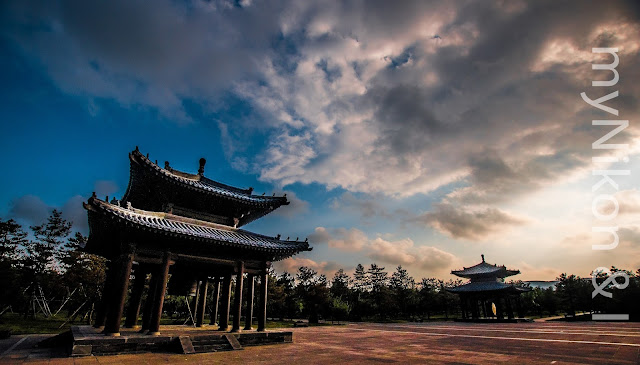Yungang Grottoes (云冈石窟) also known as Yungang Shiku is located 16 km near
Datong Shanxi
Not until
recently, the site of Yungang which has been listed as a UNESCO World Heritage
Site, was not exactly impressive. Located among vast coal mines with polluted
air, this site was hardly attractive as commented by many who visited this
amazing place a couple of years ago. But the Chinese government recognizing the
significance and the importance of this structure has poured in vast amount of
funds, not only to preserve the eroding grottoes but also the build better infra-structure
such as roads and an impressive tourist complex to welcome her visitors.
The Yungang
Grottoes were built against the mountain that stretches 1 km (0.62 miles) from
east to west, started by the a monk called Tan Yao in 453 AD under the Northern
Wei Dynasty and took approximately 50 years to complete, involving over 40,000
people. This made this entire construction approximately 1,500 years OLD!
My first
impression or the first thing that greeted me was a rock formation with small
windows and openings that closely resembles a honeycomb. It is not until I
ventured into these honeycombed rock that I began to discover her secrets ….
Huge grottoes and statutes, carved out within the rock, some reaching to the
ceiling above, towering 15 to 17 meters high, and many with very delicate
carvings and inscriptions on the walls and ceilings of the caves.
Apparently most
of these grottoes in the caves were once covered by wooden temples but many have been damaged either due to natural wear and tear, natural disasters or wars.
There are
apparently 253 grottoes with over 51,000 statutes of various sizes here,
ranging from several centimeters to over 17 meters tall.
The first cave
that greeted me was Grotto (cave) 3 towering over 25 meters in front. There is a Buddha statute over 10 meters tall, flanked by two Bodhisattva on either side
of 6.2 meters tall. The shadows and the little natural light into the caves
coupled with the reflections on the wall made this grotto a very interesting
yet challenging photography opportunity.
As I walked from
east to west, the amazing sight of many of these towering statutes were simply
breathtaking and mind blowing.
Cave 17, one of
the earliest grottoes, also known as the Five Caves of Tan Yao for example is a
15.6 meters Buddha sitting cross-ankled on the lion seat build between 460 to
470 AD. I had to literally lay on my back facing up with my super wide angle
Sigma 10-20 mm lens to capture her in totality.
Cave 20 is of
course probably the most photographed and is also the representation of the
work of Yungang, with a statute of Sakyamuni towering 13.7 meters tall, with a full and round face, majestic smile, slim lips and a
high nose, ears that extend almost to the shoulders, radiant eyes, and broad
shoulders.
This is definitely a place, just
like so many other places in China , to be enjoyed in leisure to fully comprehend and
appreciate her true and delicate beauty and value.
As the sun sets and blue skies
returned a beautiful array of orange, amber and red, and as I slowly made my
way back to the car, the feeling of awe and admiration lingers on, knowing that
I have again visited another marvelous human endeavor that could only be made
possible with sheer determination and commitment.











No comments:
Post a Comment